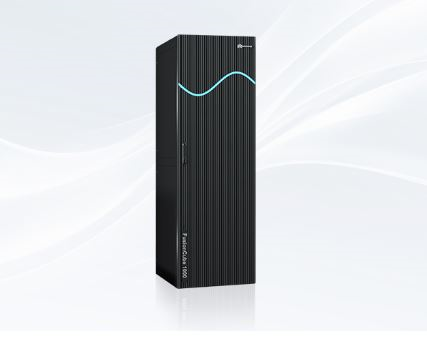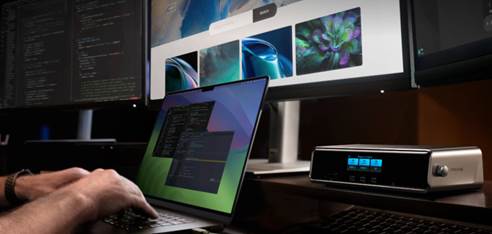For most professionals today,
laptops are no longer just secondary devices—they’ve become central to
productivity. However, when it comes to managing multiple screens, peripherals,
and constant charging, a laptop alone can feel limiting. This is where docking
stations prove their value, acting as the bridge between portability and a full
desktop experience. The right laptop docking station can transform a cluttered desk into an efficient
workstation, but choosing one requires careful consideration of both present
needs and future growth.

Key Factors to Consider When Buying a Docking Station
If you’re evaluating
which docking station best suits professional workflows, the following points
outline the most important features.
Connectivity
That Matches Your Workflow
Professionals juggle multiple devices, from external drives and webcams to card readers
and keyboards. A versatile docking station should provide a variety of ports,
including USB-C, USB-A, HDMI or DisplayPort, Ethernet, and audio jacks. For
example, the Anker 575 USB-C Docking Station offers 13-in-1 connectivity,
ensuring seamless integration of office essentials without the hassle of
constantly swapping cables.
Multi-Monitor
Support for Productivity
Dual or triple monitor setups can drastically improve efficiency by enabling
multitasking across multiple screens. Look for docks that support at least dual
4K@60Hz or higher outputs to maintain clarity and fluid performance. Anker’s
DisplayLink-powered docks allow professionals to connect up to three monitors,
making them ideal for graphic designers, analysts, or financial professionals
who require data-rich interfaces.
Power Delivery
That Keeps You Running
A docking station should do more than connect devices—it should keep your
laptop fully powered throughout the day. Many modern docks offer Power Delivery
(PD) of 85W or higher. Premium options, such as the Anker Prime Docking
Station, provide up to 140W of charging power, ensuring even high-performance
laptops stay charged during demanding tasks like video editing or 3D rendering.
High-Speed Data
Transfer for Professionals on Deadlines
Waiting for large files to transfer can cost valuable time. A robust docking
station should include USB-C and Thunderbolt ports capable of 10Gbps or more.
With Thunderbolt 5, speeds can reach up to 80Gbps, allowing massive file
transfers in seconds. For professionals working with large video files or
datasets, this capability is a game-changer.

Stable
Networking for Remote and Hybrid Work
While Wi-Fi suffices for casual use, professionals handling video calls, cloud
collaboration, or live data streams benefit from the stability of wired
Ethernet. A dock with a 2.5Gbps Ethernet port ensures low-latency connections,
essential for uninterrupted meetings or secure remote access to corporate
networks.
Intelligent
Cooling and Reliability
Docking stations often run under heavy load with multiple devices connected.
Look for models equipped with active cooling or intelligent thermal management.
For instance, Anker’s Thunderbolt 5 Dock integrates an advanced active cooling
system that prevents overheating, maintaining smooth and reliable performance
during long working hours.
Portability vs.
Desk-Centric Designs
If your work involves frequent travel, compact docks with essential ports and
portability features are ideal. On the other hand, professionals with a fixed
office setup may prefer larger docks with multiple display outputs, higher
charging power, and smart displays that track system performance. Choosing
based on lifestyle ensures maximum return on investment.
Conclusion
In summary, a laptop docking
station is an essential productivity hub for professionals today to
balance multiple tasks and devices. By prioritizing connectivity, power
delivery, monitor support, and network stability, you can create a workstation
that matches your pace. Anker’s range of docking solutions provides reliable
options for both mobile professionals and desk-bound specialists. Investing in
the right dock means investing in efficiency, reducing daily friction, and
ensuring your workspace is as dynamic as your career.



